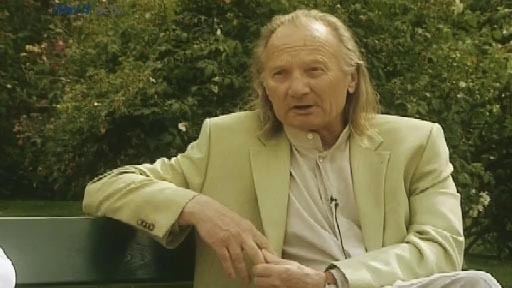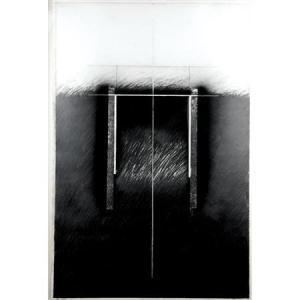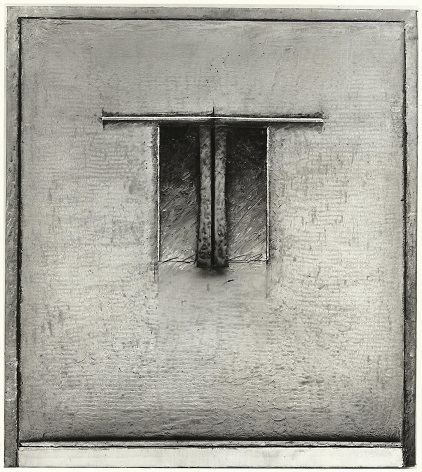Nationality American Name Paul Rotterdam | Known for Painting, drawing Role Painter | |
 | ||
Books Wild Vegetation: From Art to Nature | ||
Paul Rotterdam (born 12 February 1939) is an Austrian-born American painter.
Contents
Biography

Werner Paul Zwietnig-Rotterdam was born and grew up in Wiener Neustadt, Austria, (heavily bombed during World War II). He moved with his parents to Leoben where he attended Elementary and High School. In 1960 he moved to Vienna, briefly attended the Akademie der angewandten Kunst and enrolled at the University of Vienna to study philosophy. In 1961 he had his first exhibition of paintings at the Galleria Numero in Florence. He had an exhibition for the first time in Vienna in 1962. Three years later he was selected to represent Austria at the Fourth Biennial of Young Artists in Paris and at the Eighth Biennial of International Art in Tokyo. He also had exhibitions in Vienna, Graz, Milan, Rome and Venice. In 1966 he received a PhD in Philosophy from the University of Vienna. Daughter Charlotte was born in 1968.

At the age of 28 Paul Rotterdam was appointed Lecturer on Visual Studies at the Visual Arts Center, Harvard University, Cambridge, MA. He delivered lectures on theoretical issues of 20th-century art and conducted studio courses on drawing. His first museum retrospective took place in 1970 at the De Cordova Museum in Lincoln, MA. The exhibition continued to Kunsthalle Freiburg, Germany, the Museum Joanneum in Graz, and the Stadtmuseum Leoben, Austria. In 1973 he moved his studio to a loft on West-Broadway in the Tribeca section of New York City. He continued teaching in the spring semesters at Harvard University. In 1975 he was included in the “Whitney Biennial of American Art” (New York City), “Artist-Immigrants of America, 1876–1976” (Hirshhorn Museum, Washington, D.C), “Drawing Today in New York”, (Tulane University, New Orleans, 1976), “Eight Abstract Painters”, (Institute of Contemporary Art, Philadelphia,1976) and other exhibitions of American Art. In 1996 Rotterdam married the painter, Rebecca LittleJohn. In 2007 there were retrospective exhibitions at the Leopold Museum, Vienna and the N.Oe. Landesmuseum, St.Poelten Austria. Paul Rotterdam was awarded the medal of honor for science and art from the Republic of Austria. From 2007 his work was permanently exhibited by Galerie Erich Storrer, Zurich.

2014: Hirmer Verlag (Munich) publishes Wild Vegetation, From Art to Nature in english (distr. by University of Chicago Press) and german, a selected group of public lectures given at Harvard University, Columbia University, Portland School of Art, Maine (commencement address 1992), Cooper Union School of Art, Benedictine monastery Seckau, San Antonio College of Art. In the Fall of 2014 he lived in Vienna, Austria, to deliver book presentations and lectures at the Joanneum Graz, N.Oe. Landesmuseum, Stadtmuseum Leoben. In November 2014 he had a public discussion with the philosopher Konrad Paul Liessmann at the Leopold Museum in Vienna covering the topic of the sublime which in Modernism has become an important criterion to measure progress in art. Immanuel Kant’s thesis in the Critique of Judgement that “ the sublime is what pleases against the interest of the senses” and presents itself as nature was interpreted by Formalist critics as the demand for a high degree of abstraction. Jean-Francois Lyotard goes so far as to claim that future painting will be “white like Malevitch’s squares”.
Zwietnig-Rotterdam and Liessmann agreed that the post-modern and contemporary view of the sublime does not depend on the degree of abstraction but on the constellation of pictorial elements which form an autonomous nature. Today it is no longer a question how far a painting can be removed from the representation of reality but how autonomous it is as a nature in itself accessible to empathy and contemplation. 2015: Exhibition of 7 paintings and 4 drawings at the Galerie Erich Storrer, Zurich.
Style
Rotterdam's paintings are generally abstract and mostly monochrome or reduced in color. Three-dimensionality is an important feature in his work with forms often protruding from the pictorial plane into actual space. The art critic Dore Ashton has written about his style: "His vision of the mission of the painter is similar to the statement of Rainer Maria Rilke in a letter to his wife, not a reality that remain in dreams, intentions or moods, but their implementation in real things. Rotterdam is a modern painter (though he doubts its modernity) with images that represent closed, physical entities in themselves. He is forced to put his strong feelings in things." From about 1980 Rotterdam became less minimalist and included more naturalistic forms.
Museum Collections

Albertina, Vienna; Busch-Reisinger Museum, Cambridge, Ma; Birmingham Museum of Art, Birmingham, Al; Brooklyn Museum, NY; Cornell University Art Museum, Ithaca, NY; Des Moines Art Center, Des Moines, Ia; Fogg Art Museum, Cambridge, Ma; Solomon R. Guggenheim Museum, NYC; Hirshhorn Museum, Washington, DC; Landesmuseum Joanneum, Graz; Leopold Museum, Vienna; Metropolitan Museum, NYC; Museum of Modern Art, NYC; Milwaukee Art Museum, Milwaukee; Musee de Nice, Nice; Musee l’Abbaye Sainte Croix, Les Sables d’Olonne; Musee d’Art Moderne-Beaubourg, Paris; Musee d’Art Contemporain de Montreal, Montreal; Museum der Stadt Leoben, Leoben; Niederosterreichisches Landesmuseum, St. Polten; Ohara Museum, Tokyo; Tel Aviv Museum, Tel Aviv; The Arkansas Arts Center, Little Rock, Ark; The National Museum of Art, Osaka; The Power Institute of Art, Sydney; Walker Art Center, Minneapolis, Minn;
